(Zamrock Legends of Kitwe Series)
A Guitarist from the Heart of the Copperbelt
When you talk about Zambian music veterans who have lived and breathed the sound of the Copperbelt, Misheck M’hango is one of those names that immediately commands respect.
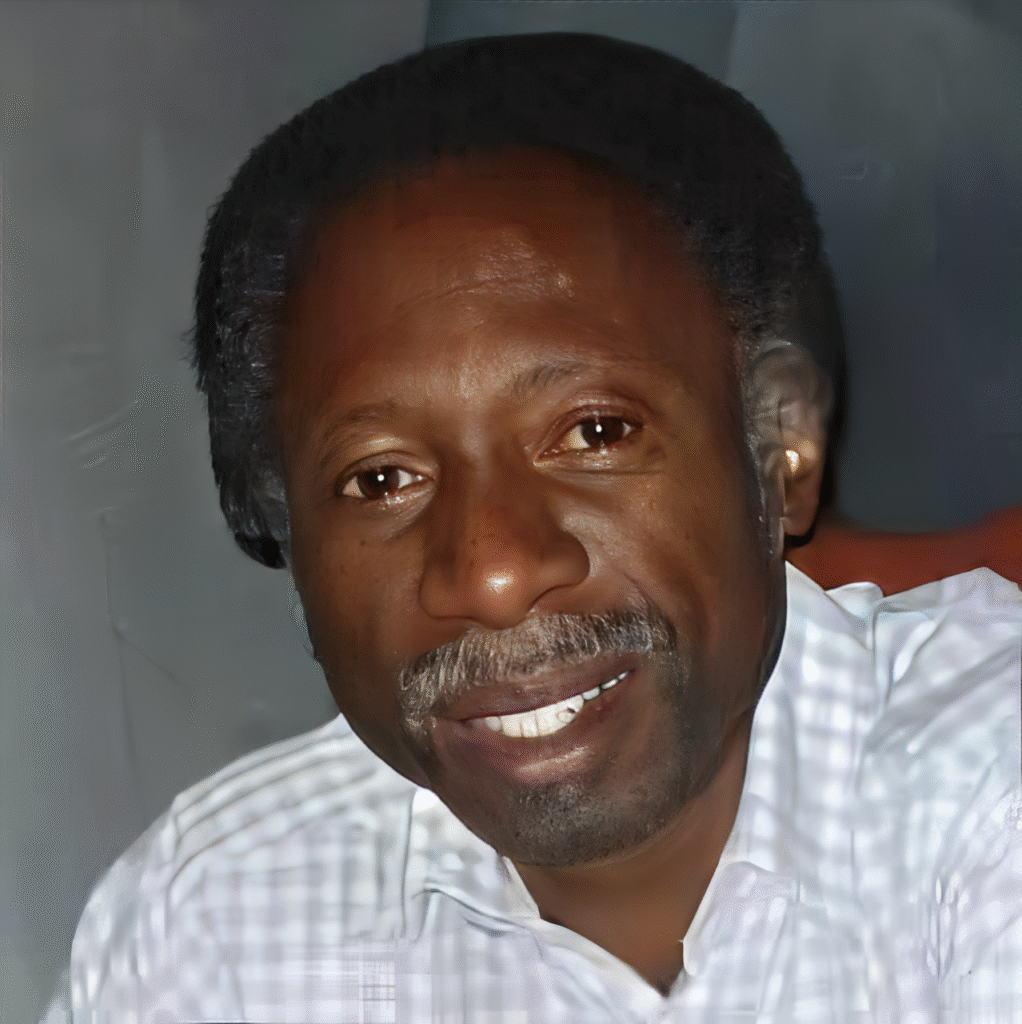
Singer, songwriter, guitarist, and lifelong music lover — his journey mirrors that of many self-taught Zambian musicians who turned humble beginnings into lasting legacies.
“I have always been in music all my life,” he says. “Starting from the streets in the mine compound where I grew up in Kalulushi.”
That single line sums up a generation — one that learned rhythm from pounding mine drills, harmony from street choirs, and melody from the laughter of the compound.
Early Life and First Notes
Born and raised on the Copperbelt, Misheck’s first instrument was a home-made “banjo.” Like many youngsters of his time, he built it himself — fishing-line strings stretched across an oil-tin body, driven by determination and curiosity.
He soon added harmonica and flute to his repertoire and, before long, was writing and recording his own songs on borrowed tape recorders.
His university years in Lusaka were a turning point. At the University of Zambia, Misheck joined UNZA Talents, a campus arts group that gave him his first structured band experience and a stage on which to refine his folk-music craft.
> “With UNZA Talents we performed to fellow students and played shows at Evelyn Hone, NRDC and Chainama,” he recalls.
Importantly, his appearances on Marc Boti’s ZNBC Folk Music Programme were solo — separate from the university group — proof of his growing confidence as both guitarist and composer.
The Band Years: From Mixed Cut to X-Virus
In 1990, Misheck joined his first electric band, Mixed Cut of Kabwe, performing alongside veteran crooner He-She Mambo. Those nights on the road sharpened his guitar phrasing and stage presence.
By 1994, he had moved to Kitwe, performing with The Flames (formerly The Tinkles) at Hotel Edinburgh and as Frontpage outside. He played guitar and gave vocal accompaniment.
Later came Mufulira, where he worked with the Zambia Army-sponsored Sappers Band.
Finally, in 1996, he founded X-Virus, a group that remains active today. How did the name come about?
“When the music bug hits, it’s viral,” he laughs. “It gets into your system, into your life, into everything within and without you. And X — because you can’t name it, you can only feel it.”
X-Virus is a live performance band, famous for its energy on stage and several TV appearances.
> “We are not a recording band — we live for shows.”

Original line up: Kennedy Mubanga (keyboard, vocals); Francis Mumbi (backing vocals); Kaunda Kamonga (bass, vocals); Misheck Muhango (vocals, guitar, flute); Wisdom Chomba – drums (not in shot).

Current line up (as power trio)… Limpo Suzyo Mukumbuta (bass, backing vocals); Wisdom Chomba (drums); Misheck M’hango (guitar, vocals, flute).
Still, Misheck continues to record solo material, balancing his roles as bandleader, songwriter, and instrumentalist.
The Piano House Story
Misheck’s name often surfaces when people reminisce about Piano House, the legendary Kitwe music shop founded by Mr. Garson and Mr. Kruger in the 1970s-1990s.
It was there, one afternoon, that his story took a defining turn.
He walked in with a bold request — a guitar “with a whammy bar.”
“The proprietor seemed impressed,” he remembers. “He said he was surprised that a Zambian guitarist would want that when everyone else was playing Kalindula.”
After a lively test jam that drew a small crowd, the owner rewarded him with a solid Fender carry-case — free of charge.
That simple act sealed Misheck’s lifelong affection for Piano House.
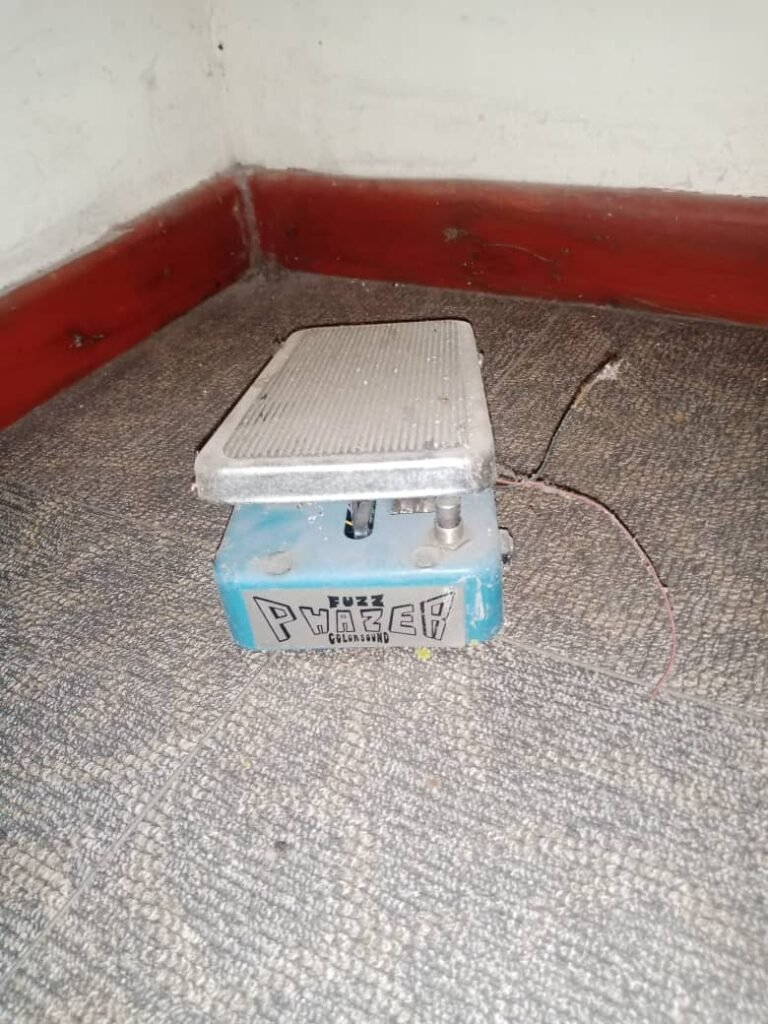
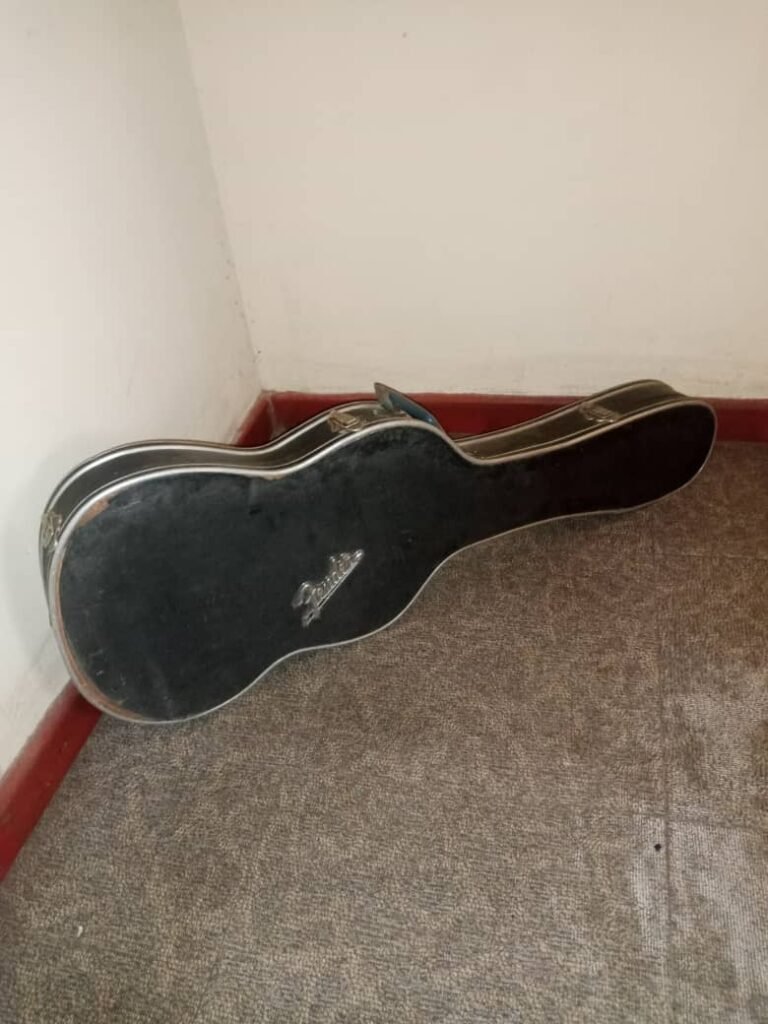
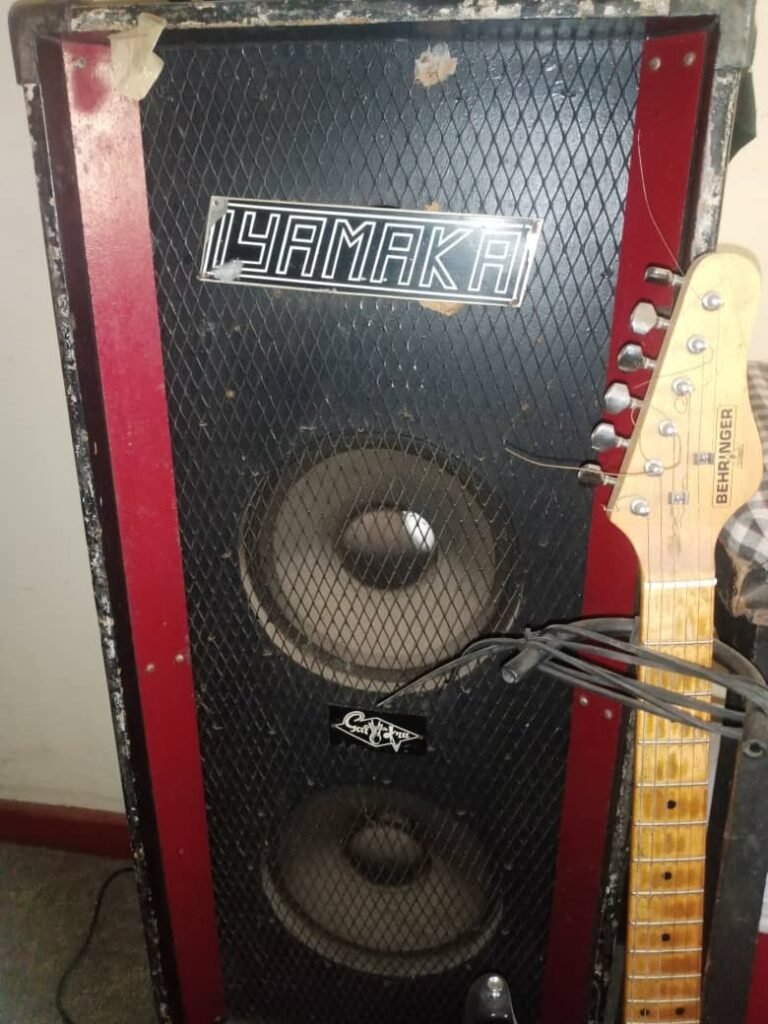
The GarKru Mbwili – Zambia’s Home-Made Hero
Among his prized possessions is the GarKru Mbwili — a locally built electric guitar modelled on a Fender Stratocaster but with a Gibson-style headstock.
He bought it from Piano House and used it professionally for years.
“It was a wonderful instrument,” he smiles. “I broke the whammy once in a fit of excitement on stage — but it gave me many unforgettable moments.”
GarKru, Misheck clarifies, is a brand, not a label — an important distinction in music circles.
The Mbwili (meaning leopard in Bemba) was one of Zambia’s earliest examples of local instrument manufacturing — proof that homegrown craftsmanship could stand proudly beside imported names.
He still owns a GarKru speaker cabinet, used by X-Virus today, and the Fuzz Phazer pedal that, as he puts it, “annoyed my neighbours when I lived in the flats.”
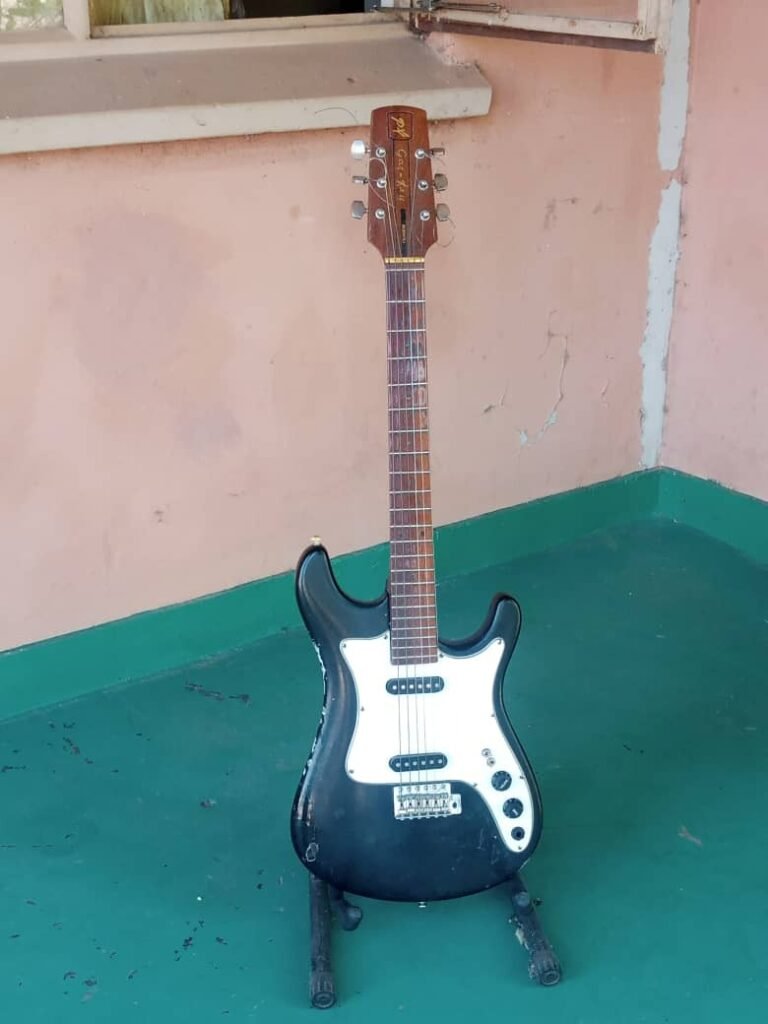
Beyond the Gear – The Keeper of Memories
Fellow musicians describe Misheck as a walking archive.
Hector Sithole once said:
> “Ask him about any record or tape — he’ll pull it out, either in photos or physically. His collection surprised me.”
Indeed, Misheck has curated his own private museum of Zambia’s musical heritage — instruments, cassettes, amplifiers, posters, and stage gear — all carefully preserved.
In an era where many archives vanished, his discipline has become an act of cultural preservation.
Words to Aspiring Musicians
Misheck often mentors younger artists. His advice is direct and heartfelt:
“Listen to what is exploding in your head; channel it out as truly and as faithfully as you can.
Understand the skills you need in order to do that, and work hard at developing them.
Remain true to your music — everything else follows.”
Music as a Business
He’s equally pragmatic about the financial side:
“Music as a business is the same as any other business.
Learn the basics — what’s a business plan, what’s cash flow, how do you cost your products and services, how do you set prices, how do you sustain profit?
Make sure people pay to listen. Make calculations and set your price — else, don’t play.”
On Technology and AI
When asked about the growing use of Artificial Intelligence in music, Misheck chuckles:
“I’m too old-fashioned for that. I don’t want any AI near my music.
If it doesn’t come from fingers, if the sound isn’t produced directly by playing instruments, I distance myself.
Technology should stay on the production side — recording, editing, pressing, storage — not on the creative side.”
Legacy and Inspiration
From Kalulushi to Lusaka, Kabwe, Kitwe, and Mufulira, Misheck Muhango’s story captures what it means to be a Zambian musician: self-taught, community-driven, endlessly creative.
He has seen the highs of applause and the lows of neglect, yet he keeps performing — for the love of music and the spirit of the Copperbelt.
“We live for shows,” he says again, smiling.
Where to Find His Music
You can sample Misheck Mhango’s performances and recordings on his YouTube channel —
youtube.com/@misheckmhango9206 —
or connect with him on Facebook for updates, show dates, and new releases.
Final Thoughts
Zambian music history is richer because of people like Misheck Mhango — men who kept the rhythm alive when the lights dimmed and the industry faltered.
Every note he plays carries decades of persistence, faith, and invention.
If you ever meet him, ask about the GarKru Mbwili — and listen carefully.
You’ll be hearing more than a story about a guitar.
You’ll be hearing the heartbeat of Kitwe itself.
Listen to the podcast on YouTube:
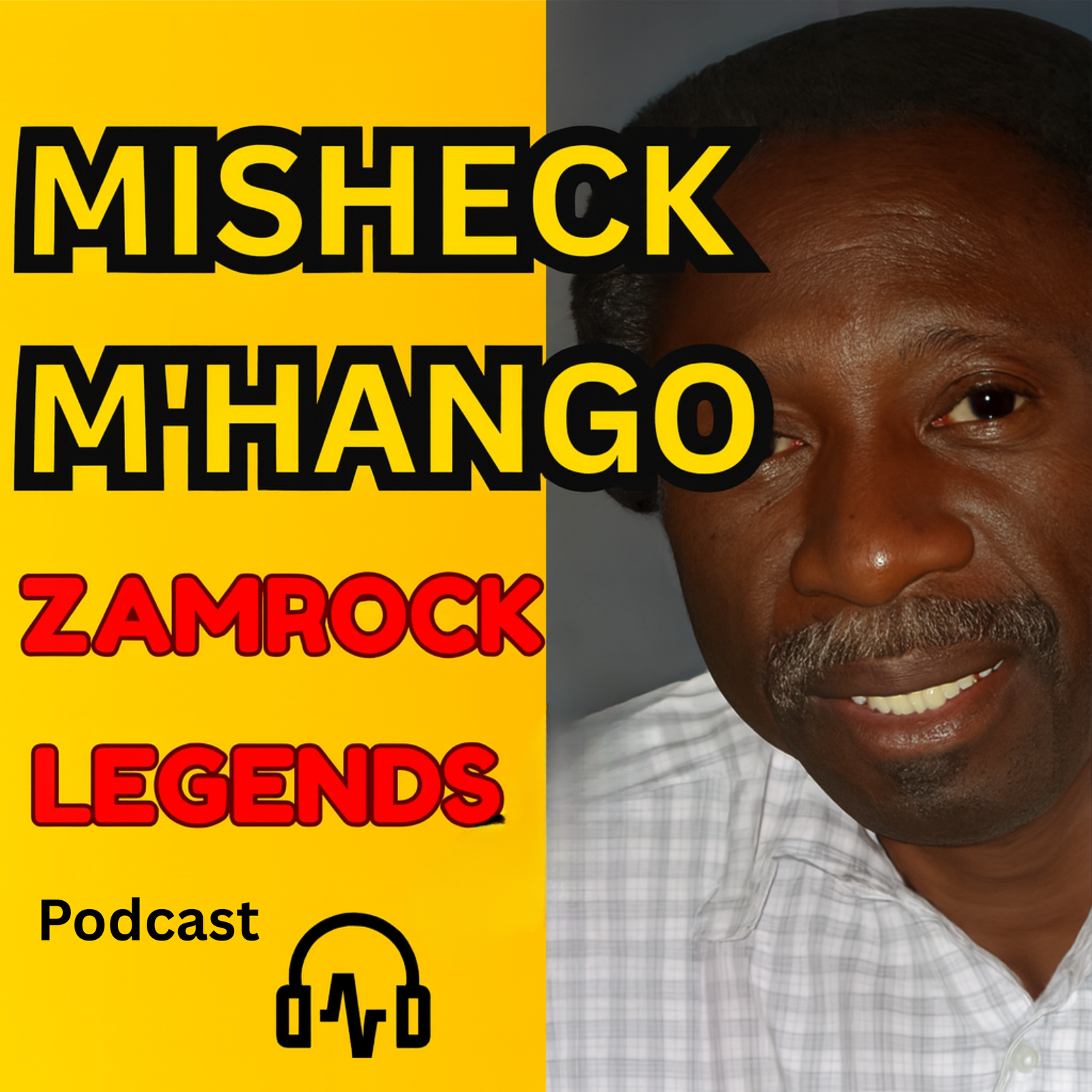


Haha, reading about Misheck’s quest for a guitar with a whammy bar is spot on! Reminds me, I once tried explaining the appeal of kalindula to a friend – resulted in a blank stare! Love the viral X-Virus name though, brilliant. And his advice to aspiring musicians? Gold! Remain true to your music… Classic. Though his stance on AI is funny – If it doesn’t come from fingers… – perhaps he hasnt heard you can play virtual instruments? Still, his dedication to preserving Zambian music history via his private museum is epic. Keep rocking, Misheck, and thanks for the laugh!deltarune prophecy maker